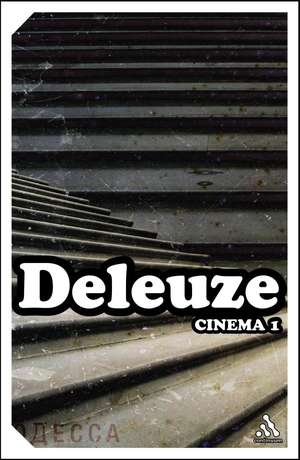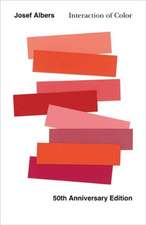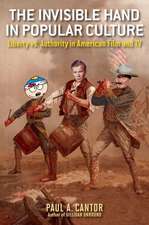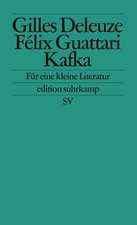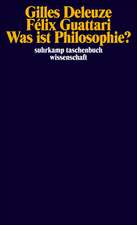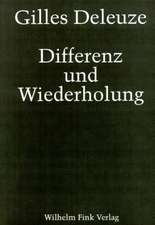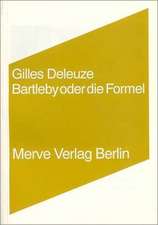Cinema I: Continuum Impacts
Autor Gilles Deleuzeen Limba Engleză Paperback – 18 ian 2005
| Toate formatele și edițiile | Preț | Express |
|---|---|---|
| Paperback (2) | 154.18 lei 3-5 săpt. | +40.44 lei 5-11 zile |
| Bloomsbury Publishing – 23 oct 2013 | 154.18 lei 3-5 săpt. | +40.44 lei 5-11 zile |
| Bloomsbury Publishing – 18 ian 2005 | 293.34 lei 3-5 săpt. |
Din seria Continuum Impacts
-
 Preț: 310.42 lei
Preț: 310.42 lei - 40%
 Preț: 104.54 lei
Preț: 104.54 lei - 11%
 Preț: 220.02 lei
Preț: 220.02 lei -
 Preț: 226.26 lei
Preț: 226.26 lei - 40%
 Preț: 108.69 lei
Preț: 108.69 lei - 42%
 Preț: 159.42 lei
Preț: 159.42 lei - 40%
 Preț: 131.99 lei
Preț: 131.99 lei - 40%
 Preț: 118.58 lei
Preț: 118.58 lei - 39%
 Preț: 93.56 lei
Preț: 93.56 lei - 40%
 Preț: 293.71 lei
Preț: 293.71 lei - 44%
 Preț: 122.26 lei
Preț: 122.26 lei - 40%
 Preț: 114.79 lei
Preț: 114.79 lei - 36%
 Preț: 184.88 lei
Preț: 184.88 lei - 41%
 Preț: 89.87 lei
Preț: 89.87 lei - 40%
 Preț: 123.69 lei
Preț: 123.69 lei - 14%
 Preț: 151.38 lei
Preț: 151.38 lei - 38%
 Preț: 178.70 lei
Preț: 178.70 lei - 41%
 Preț: 189.08 lei
Preț: 189.08 lei - 41%
 Preț: 116.43 lei
Preț: 116.43 lei - 41%
 Preț: 183.89 lei
Preț: 183.89 lei - 40%
 Preț: 117.51 lei
Preț: 117.51 lei - 44%
 Preț: 131.99 lei
Preț: 131.99 lei - 35%
 Preț: 138.79 lei
Preț: 138.79 lei - 39%
 Preț: 139.77 lei
Preț: 139.77 lei - 41%
 Preț: 1079.83 lei
Preț: 1079.83 lei - 39%
 Preț: 122.23 lei
Preț: 122.23 lei - 23%
 Preț: 221.18 lei
Preț: 221.18 lei - 40%
 Preț: 122.81 lei
Preț: 122.81 lei - 41%
 Preț: 103.20 lei
Preț: 103.20 lei - 14%
 Preț: 188.82 lei
Preț: 188.82 lei - 40%
 Preț: 100.66 lei
Preț: 100.66 lei - 33%
 Preț: 165.72 lei
Preț: 165.72 lei - 14%
 Preț: 190.96 lei
Preț: 190.96 lei - 40%
 Preț: 108.60 lei
Preț: 108.60 lei - 40%
 Preț: 100.13 lei
Preț: 100.13 lei - 43%
 Preț: 115.23 lei
Preț: 115.23 lei - 40%
 Preț: 110.29 lei
Preț: 110.29 lei - 41%
 Preț: 89.96 lei
Preț: 89.96 lei - 44%
 Preț: 109.03 lei
Preț: 109.03 lei - 39%
 Preț: 121.60 lei
Preț: 121.60 lei - 40%
 Preț: 118.65 lei
Preț: 118.65 lei - 36%
 Preț: 155.17 lei
Preț: 155.17 lei - 38%
 Preț: 183.40 lei
Preț: 183.40 lei - 43%
 Preț: 130.11 lei
Preț: 130.11 lei
Preț: 293.34 lei
Preț vechi: 460.29 lei
-36% Nou
56.14€ • 58.39$ • 46.34£
Carte disponibilă
Livrare economică 24 martie-07 aprilie
Specificații
ISBN-10: 0826477054
Pagini: 280
Ilustrații: black & white illustrations
Dimensiuni: 129 x 198 x 15 mm
Greutate: 0.28 kg
Editura: Bloomsbury Publishing
Colecția Continuum
Seria Continuum Impacts
Locul publicării:London, United Kingdom
Recenzii
Descriere
Deleuze identifies three distinct principal types of 'image movement' and draws upon diverse examples from the work of such major filmmakers as Griffith, Eisenstein, Cassavetes and Altman.
Caracteristici
Notă biografică
Gilles Deleuze (1925-1995) was one of the key figures in poststructuralism, and one of the most influential philosophers of the twentieth century. His major works include, with Felix Guattari, A Thousand Plateaus and Anti-Oedipus.
Cuprins
Preface to the English edition \ Translators' Introduction \Preface to the French Edition \ 1. Theses on Movement: First Commentary onBergson \ 2. Frame and Short, Framing and Cutting \ 3. Montage \ 4. TheMovement-Image and its Three Varieties: Second Commentary on Bergson \ 5. ThePerception-Image \ 6. The Affection-Image Face and Close-Up \ 7. TheAffection-Image: Qualities, Powers, Any-Space-Whatevers \ 8. From Affect toAction: The Impulse Image \ 9. The Action-Image: The Large Form \ 10. The Action-Image:The Small Form \ 11. Figures, or the Transformation of Forms \ 12. The Crisisof the Action-Image \ Glossary \ Notes \ Index.
